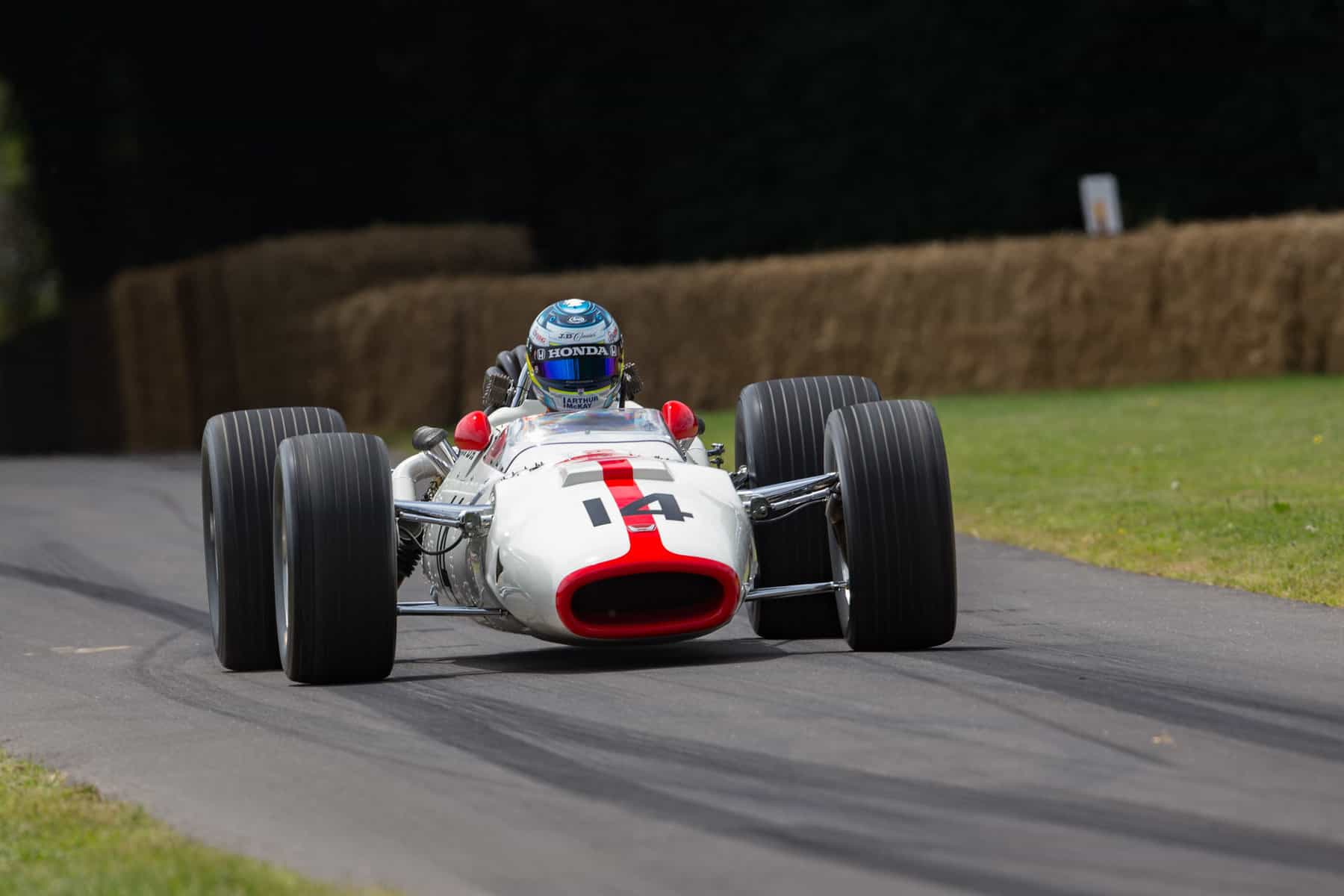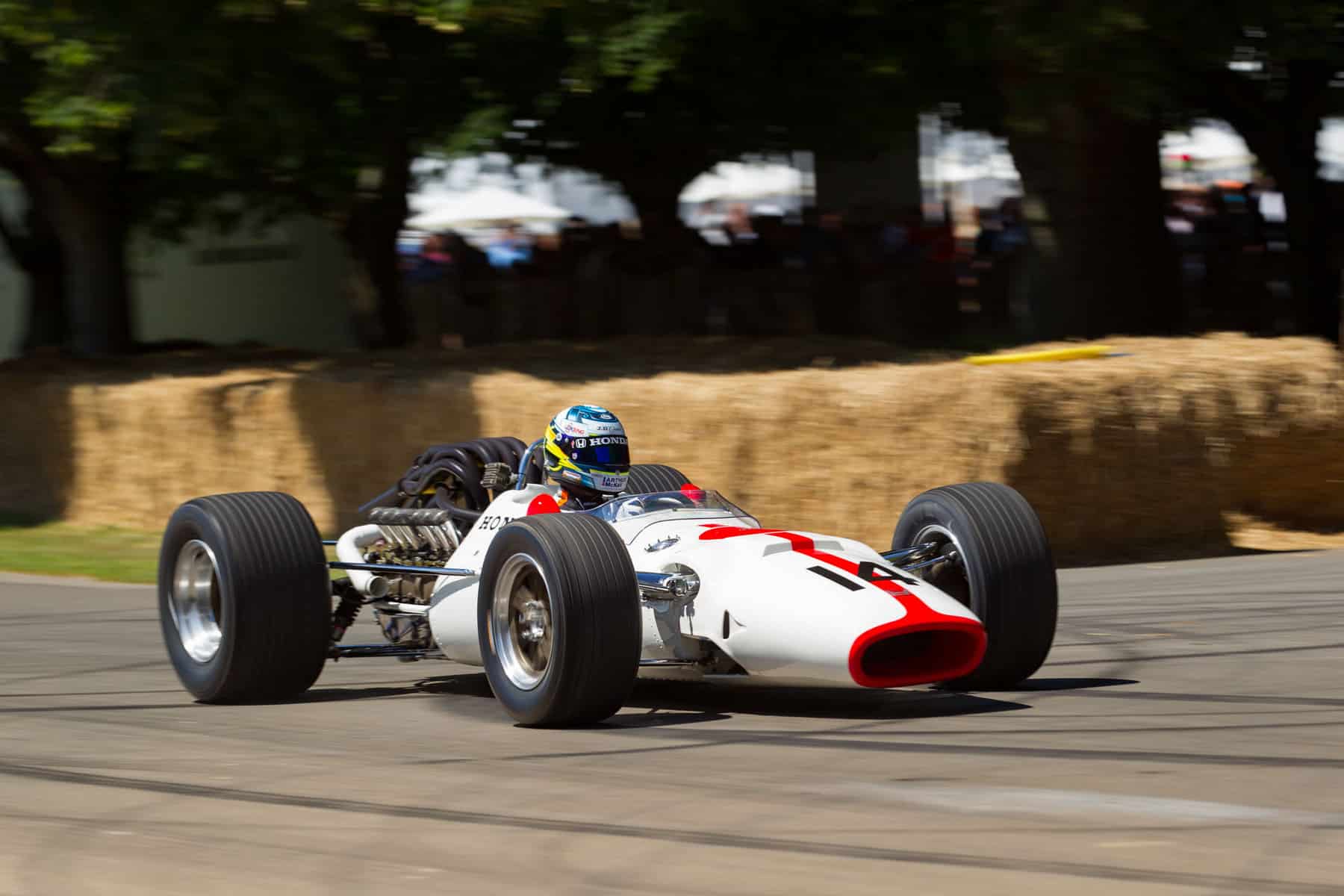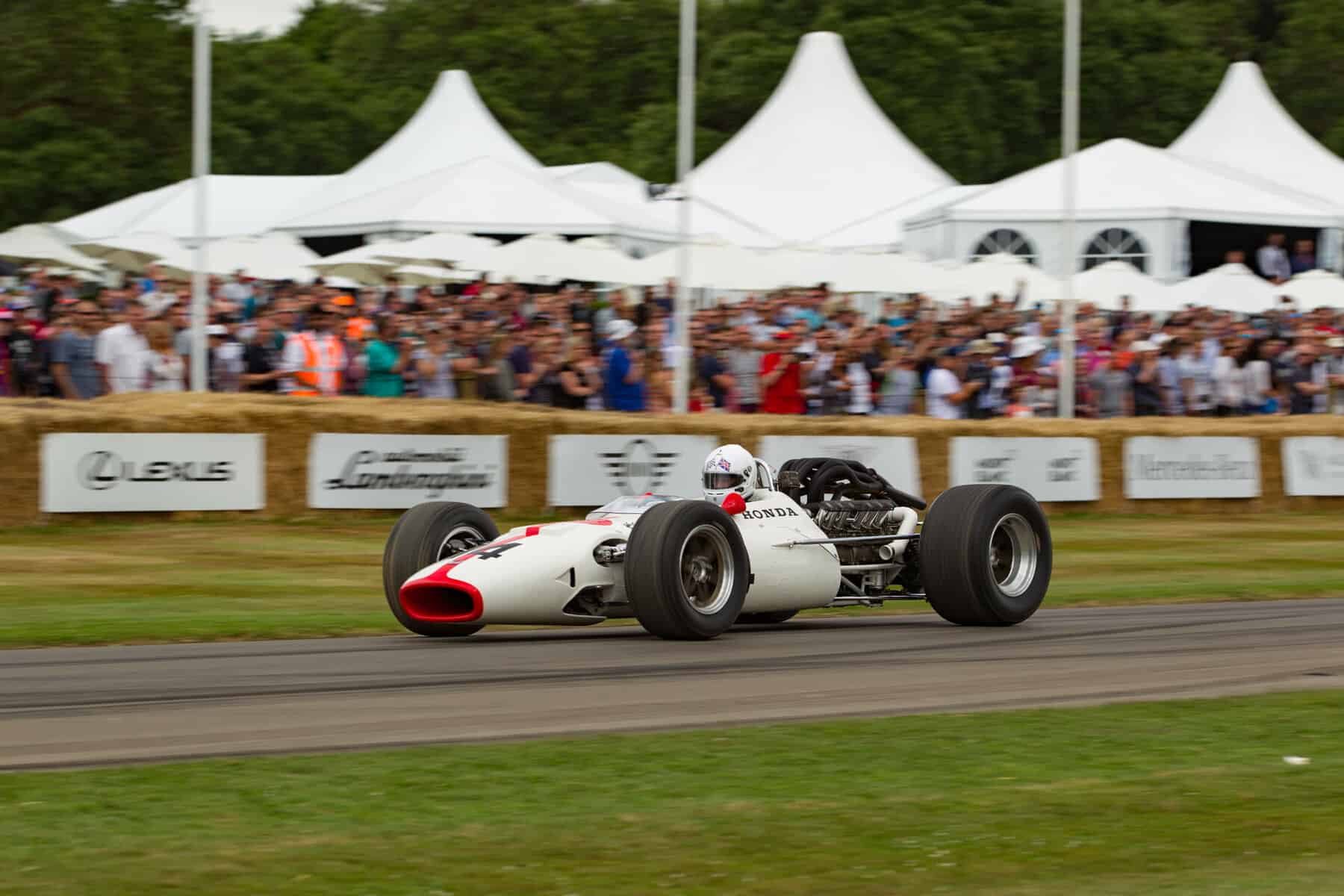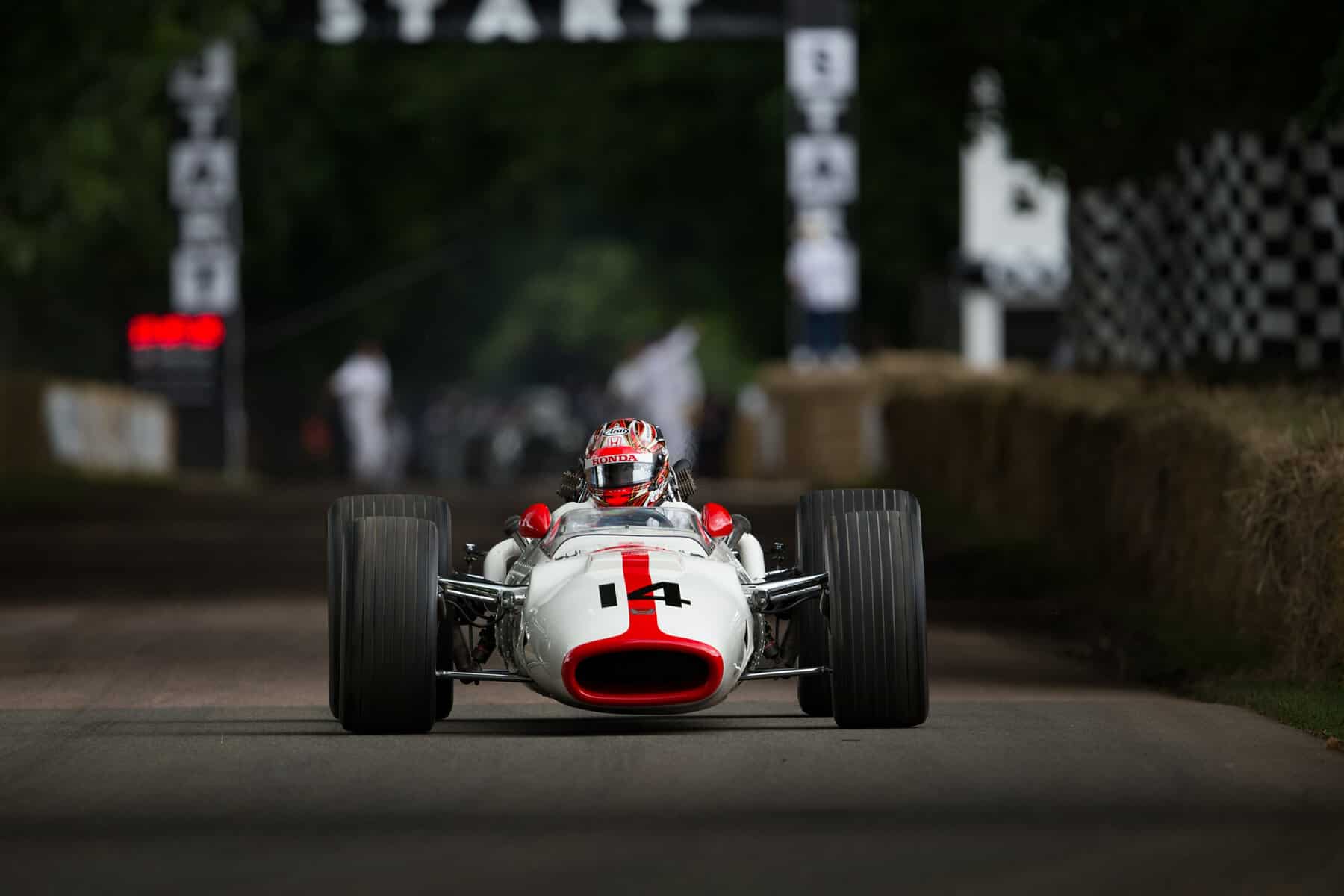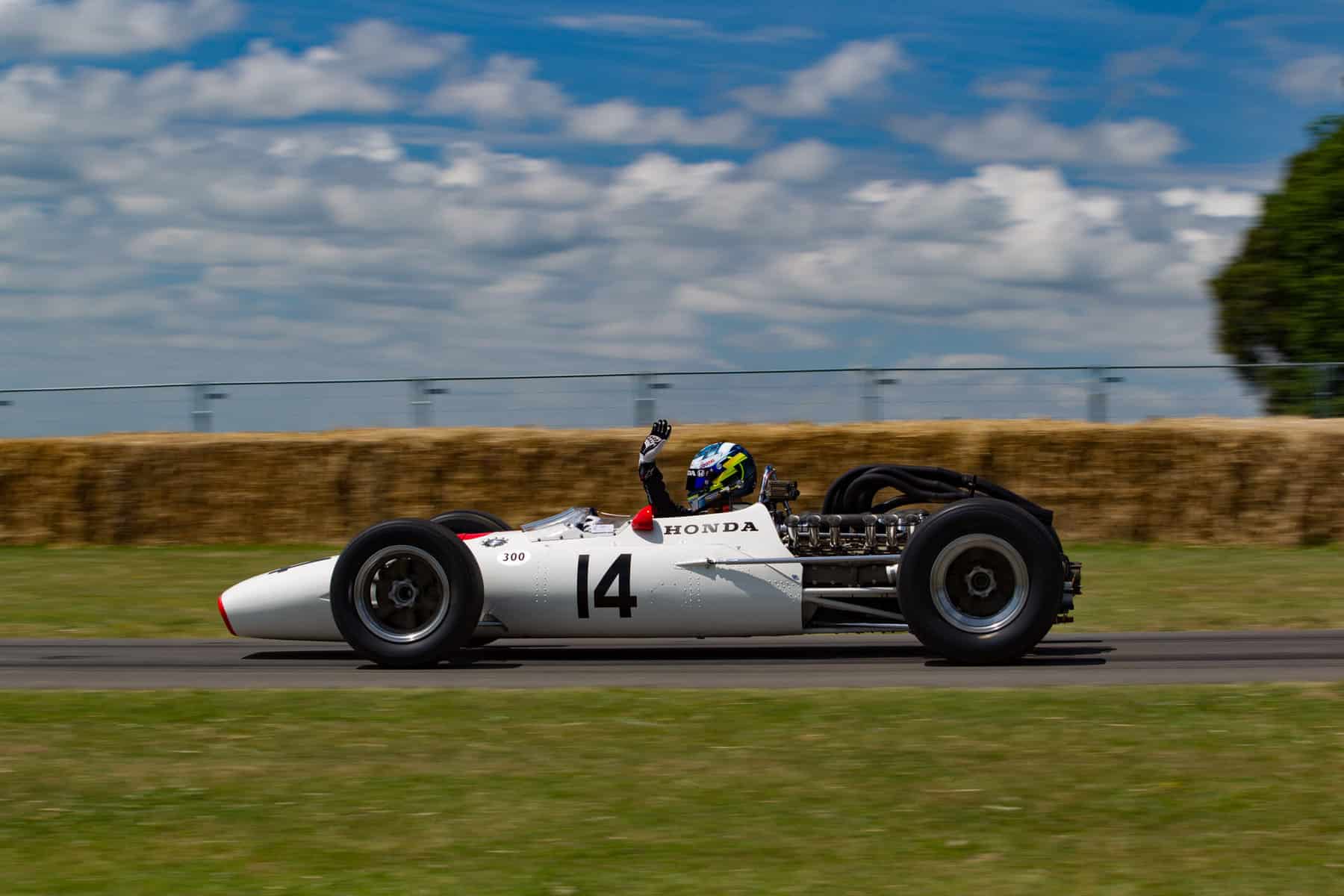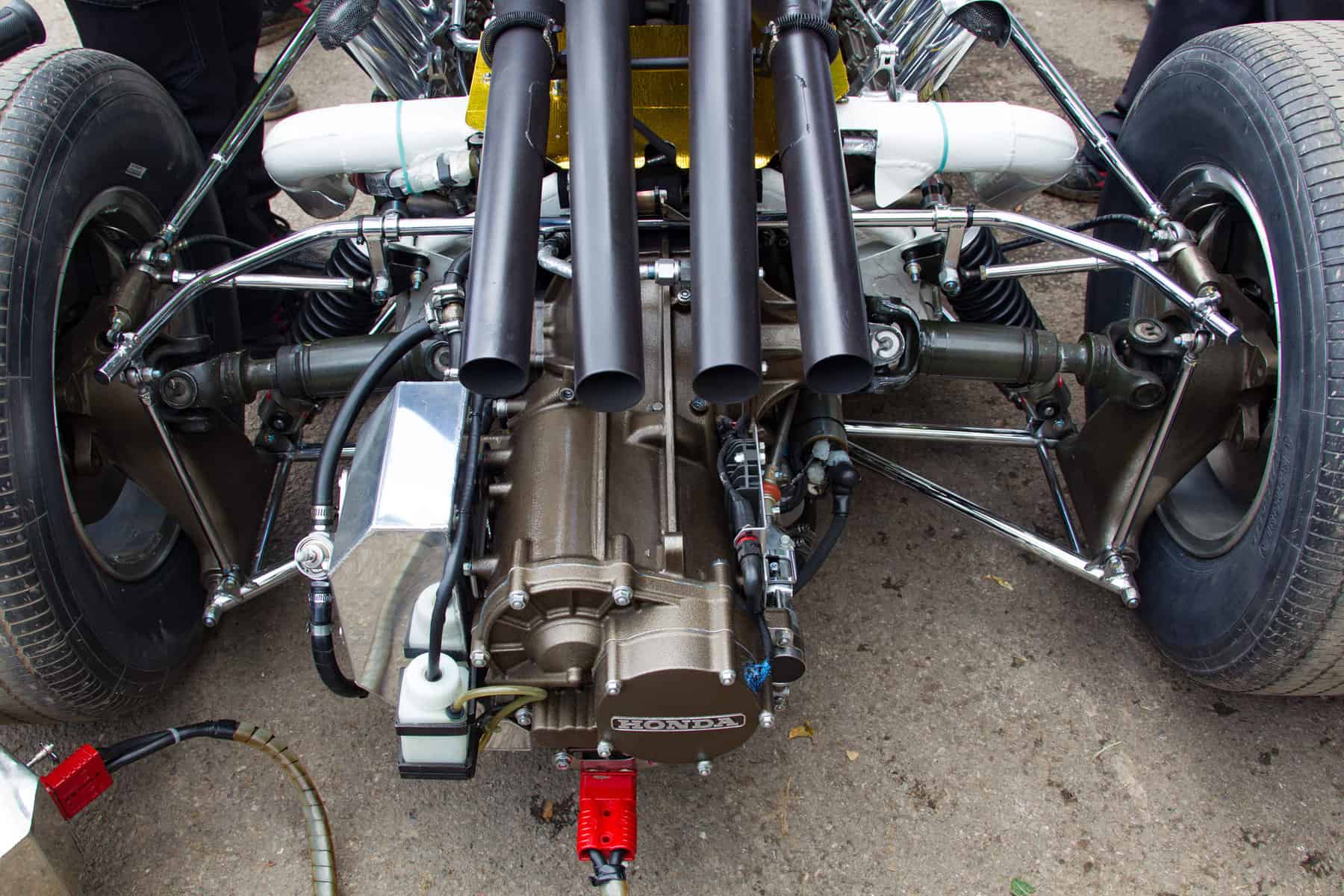Honda RA300
The great "one-lap wonder" of Formula 1
WORDS & IMAGES BY: WOUTER MELISSEN
Most will be familiar with one-hit wonders of pop music, but Formula 1 has its own one lap wonder, the Honda RA300. Raced four times by John Surtees, this one-off machine led for just a single lap, but it was a lap that mattered – the final lap of the 1967 Italian Grand Prix.
This victory was the result of a newly signed cooperation between Honda and Lola with the latter supplying a chassis for the Japanese manufacturer’s V12 engine. This was an attempt to get back into the winner’s circle after Honda’s own Grand Prix car struggled to keep up with the rival teams.
Honda had won the final Grand Prix of the 1965 season with the 1.5-liter V12-engined RA272. Unfortunately, this turn of form came right before a new set of regulations came into force. From 1966 onwards, the displacement limit for naturally aspirated engines was set at three liters, which effectively meant that a brand-new engine was needed. It was an issue that all teams faced, but unlike Honda most could rely on engines from other disciplines while developing a bespoke 3.0-liter Formula 1 unit. The only four-wheel motorsport Honda was involved in was Formula 1, so it only had an engine half the size required. Having spent all of 1965 further perfecting the RA272, Honda did not have a viable replacement until round seven of nine.
One of the unique features of the RA272 had been the transversely mounted engine. Much like Honda’s motorcycle engines, the engine featured a central power pick-up, which allowed the gearbox to be mounted alongside the engine, in unit with the final drive. Installing a 3.0-liter engine transversely would have resulted in all sorts of packaging issues, so Honda reverted to a more conventional longitudinal layout for the new RA273. Designed by Shoichiro Irimajiri, the engine was once again a V12, and the central power pick-up was retained. To house the 3.0-liter engine, a new aluminum monocoque chassis was constructed. It was a full-length monocoque with the V12 engine squeezed between two pontoons.
The first RA273 was ready in time for the Italian Grand Prix, where it was driven by Richie Ginther. He was seventh fastest in qualifying, ran as high as second, but retired after an accident early in the race. In the remaining races, Ginther was joined by Bucknum in a second RA273. At the Mexico season finale, Ginther finished fourth. For the 1967 season, Honda focused their Grand Prix racing effort by running just one car, for John Surtees. He was well-known to Honda long before he won the 1964 Formula 1 World Championship with Ferrari, thanks to his successful exploits on two wheels. Riding for Norton and MV Agusta, he regularly beat Hondas on his way to seven World Championships between 1956 and 1960.
Surtees did well to finish third at his Honda debut in the South African Grand Prix. He then started third in the Monaco Grand Prix, but suffered a series of reliability issues and the team even withdrew from the French Grand Prix. Surtees then finished sixth and fourth in the British and German Grands Prix. On paper the results were encouraging, but there were fundamental issues with the RA273. It was substantially overweight, tipping the scales at 740 kg when the weight limit was set at 500 kg. The powerful V12 engine was a major contributor, but there was more to be gained by addressing the bulky monocoque chassis.
It was Surtees who suggested Honda partner with British specialists Lola. Driving a Lola T70, Surtees had won the inaugural Can-Am Challenge Cup in 1966, so he knew how competitive the Eric Broadley designs were. In a letter to Honda, Broadley confirmed the arrangement: “It was agreed that Lola Cars Limited should build one Formula 1 chassis, based on the current Indianapolis cars, to suit the Honda engine and gearbox…. In view of the shortage of time, Honda agree to bear the cost of manufacture of certain parts in Tokyo and to make available the services of one designer at the Lola factory. It was agreed that the purchase price for our contribution to this venture should be £10,000.”
Known internally as the Lola T130, the new car was based on the T90 Indy Car as per the agreement with Honda. While the bulkheads were the same, it was re-skinned with thinner-gauge aluminum sheets. The monocoque ended aft of the driver’s seat with the engine and rear suspension mounted in a separate spaceframe. It was fitted with revised suspension components to suit Surtees’s particular needs. At the front there were lower wishbones with top rockers that actuated in-board mounted springs and dampers. The rear end featured reversed lower wishbones with top links and twin trailing arms. Much weight was saved by reducing the fuel system from six tanks and pumps to three tanks with a single pump.
To give what Honda dubbed the RA300 the best fighting chance, the Japanese engineers spent the summer of 1967 reworking the V12 engine. One of the reasons it was so heavy was the elaborate valve-train with twin overhead camshafts and four valves per cylinder. The engine had centrally mounted exhausts, while the intake ports were placed between the camshafts. Honda claimed that it was good for 412 hp at 11,500 rpm, but even with the further refinements, the engine struggled to produce 400 hp. By comparison, the smaller and lighter Ford Cosworth DFV V8 was rated at 408 hp at 9,000 rpm. The Honda V12 engine was mated to a proprietary five-speed gearbox, which was lighter now as it had two shafts instead of three.
Honda sat out the Canadian Grand Prix while the RA300 was being assembled. Little over a month after Broadley confirmed his commitment with the letter to Honda, the RA300 was ready to go and entered for the Italian Grand Prix. On the scales of the scrutineers, the new Hondola weighed 610 kg. Although this was still well over the limit, it represented a considerable improvement over the RA273. In qualifying, Jim Clark was fastest of all in his Lotus, powered by the new DFV engine. Surtees was a disappointing ninth, nearly two seconds off the pace.
After a somewhat chaotic start, which used lights for the first time in Formula 1 history, Clark regained the lead on lap three. A puncture in lap fourteen threw all the way down the order and he lost a lap. In what was perhaps his greatest performance in a Grand Prix car, he first un-lapped himself and then passed the cars ahead one by one. By the time, he got to Surtees, the Honda driver was running in an impressive third place. It took him forty-six laps, but Clark managed to regain the lead by passing Brabham on lap sixty-one. A very determined Surtees had kept tabs on Clark and was fighting for second with Brabham going into the final laps. On lap sixty-five of sixty-eight, Surtees had briefly gotten ahead, but Brabham managed to hold on to second going into the final lap.
All of a sudden, Clark slowed down – his Lotus was out of fuel. This made the fight between Brabham and Surtees not for second but for the victory. Going into the long Parabolica right-hander, which was the last corner before the straight, Brabham was still leading. He took an inside line despite there being an oil slick. Surtees on the other hand took the wider outside line that allowed him to get onto the straight at a higher speed. This was just enough to take the lead, for the first time in the race, and clinch victory just two tenths of a second ahead of Brabham. Clark saw his stellar performance rewarded with a third-place finish as his Lotus coasted across the line.
Surtees was back behind the wheel at the United States Grand Prix. In qualifying, he was a disappointing 2.6 seconds off the pace of Graham Hill’s Lotus on what was a 65-second lap. In the race, he retired with an alternator failure. The RA300 ended the year with another point-scoring finish, crossing the line fourth in the Mexican Grand Prix, be it a lap down from Clark. The RA300 was raced only once more, at the 1968 season opening South African Grand Prix. On December 31, 1967, Surtees set the sixth-fastest time in qualifying. The race itself was scheduled for January 1. Five laps down, Surtees eventually crossed the line in eighth.
The RA300 had been a stopgap before a purpose-developed Lola chassis was ready early in 1968. Known as the T180 or RA301, it featured a full-length monocoque like the RA273. The V12 engine was also reworked considerably with the intake-ports moved to inside the V and the exhausts placed on the outside. Surtees raced the car throughout the year with a second as the best result in the French Grand Prix. It was a bittersweet result, as his teammate Jo Schlesser had fatally crashed the all-new RA302 during the race. Developed in Japan, it was powered by an air-cooled V8 and featured a magnesium monocoque, which was one of the reasons the car burned so intensely after Schlesser’s crash. Surtees had refused to drive the car.
At the end of the 1968 season, Honda retired from Grand Prix racing and did not return as an entrant until 2006. That year, Jenson Button won the Hungarian Grand Prix. This would be the very last Grand Prix win for Honda as a constructor. For Surtees, his victory in the 1967 Italian Grand Prix would be his sixth and last even though he would continue to race well into the 1972 season. No Lola or Lola-developed car would win a Grand Prix again.
Retained by Honda, the unique RA300 remains the only Grand Prix winner that led just a single lap during its entire career. It has been maintained in full running order and is regularly demonstrated at events like the Goodwood Festival of Speed.

